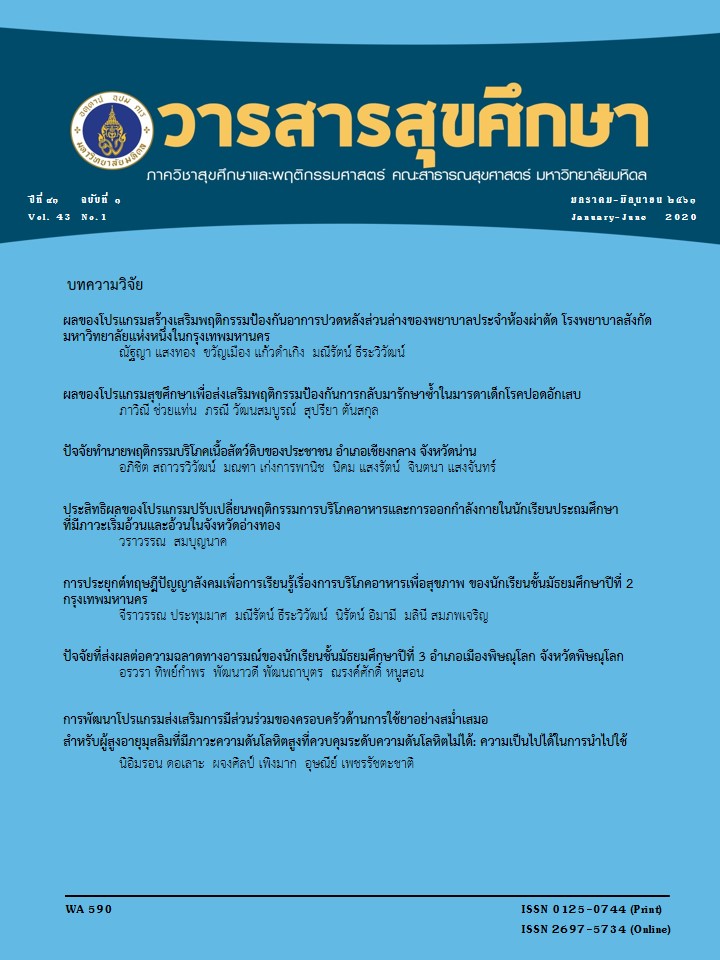Factors Predicting Raw Meat Consumption Behavior among People Chiang Klang District, Nan Province
Main Article Content
Abstract
The raw meat consumption is harmful to health and life. This predictive correlation research aimed to examine 1) the prevalence of raw meat consumption, 2) the association between predisposing, enabling and reinforcing factors and raw meat consumption, and 3) predictive factors of raw meat consumption in Chiang Klang district, Nan Province, Thailand. The PRECEDE model was applied for determining the conceptual framework. The sample population consisted of 300 adults who lived in Chiang Klang District, aged 18 years and over, who were selected by multi-stage random sampling. Data were collected by a structured questionnaire, analyzed by descriptive and inferential statistics using Chi-square, Odd ratio, 95% CI and Binary logistic regression.
The results showed that prevalence of raw meat consumption behavior was 65.30%. Significant factors associated with raw meat consumption (at 95% CI) were: (1) predisposing factors, including gender, marital status, education, knowledge and belief; (2) enabling factors, including meat accessibility, meat prices, health information received by radio, community rules and social norms, and; (3) reinforcing factors, including role models among family members and friends, and admonishment by family members and health personnel/ village health volunteers. The predictive factors of raw meat consumption behavior (41.6%) were gender, knowledge, belief, meat prices, community rules, role models among friends, and admonishment by health personnel/village health volunteers. It is recommended that health personnel working in the community, and other stakeholders should create proactive intervention which implemented at both the individual and environmental levels, and be driven by networks and the community, to promote knowledge, beliefs, right values and environmental arrangements, using community measures as tools.


